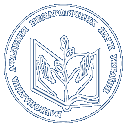- Литвинова, С.Г. (orcid.org/0000-0002-5450-6635) (2022) Readiness of students of general secondary education institutions to use virtual reality in the education process Перспективи та інновації науки (Серія «Педагогіка», Серія «Психологія», Серія «Медицина»), 4 (9). pp. 218-231. ISSN 2786-4952
|
Text
СТАТТЯ-VR-ЛИТВИНОВА.С.pdf Download (570kB) |
Abstract
Modern digital technologies make it possible to improve the quality of education in secondary schools, including the use of content and virtual reality tools. The article describes the main components that characterize virtual reality (immersion, interaction, attraction), identifies the key areas of research on virtual reality (VR) in the field of education, characteristic of this technology, in particular: the development of students' spatial imagination, the features of laboratory and practical work, which are difficult or impossible to conduct in traditional learning environments, improve the quality of STEM education, and develop multisensory learning. The opinion of scientists on the effectiveness of using VR in achieving learning goals, increasing the cognitive activity of students, and achieving the effect of immersion in the subject area is summarized. It has been established that three types of VR equipment are used in secondary schools: they are created specifically for the field of education and have their own library of courses; professional - with adaptation to the needs of the secondary schools; budget versions to showcase 3D videos from YouTube channel. Analyzing the data obtained, it was found that 88% of students are provided with computer equipment, 100% have access to the Internet, 67% have heard about VR technology, 72% had experience using it, including 9% for education, 23% for entertainment. It was found that students are ready to use VR in different lessons - physics, computer science, biology, geography, and history are in priority. It was found that 88% of students in grades 7-9 want to study using VR, and 90% are positive about the introduction of such technology. Additional research is needed on the issue of teachers' readiness for such innovations, assessment of the quality of the developed educational VR content for secondary schools, and a system for integrating VR into educational practice.
Downloads
Downloads per month over past year
Actions (login required)
 |
View Item |




